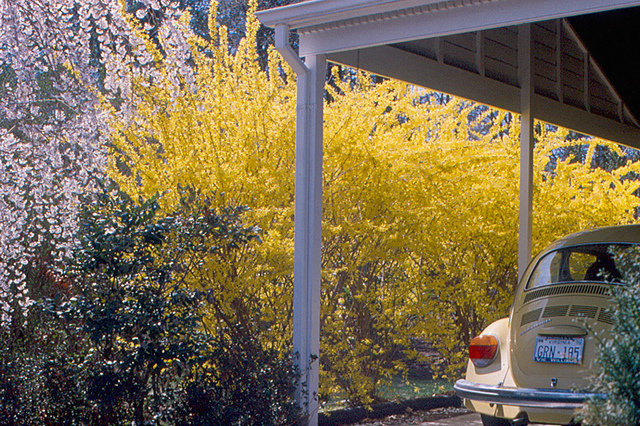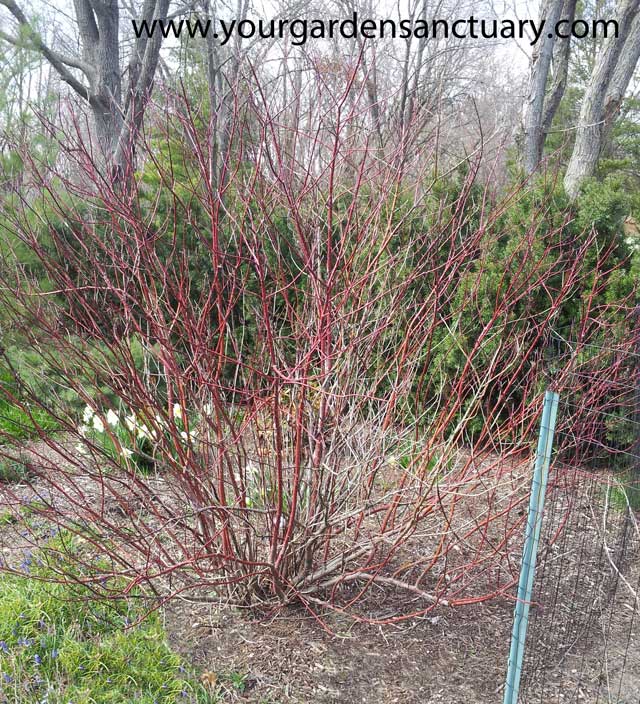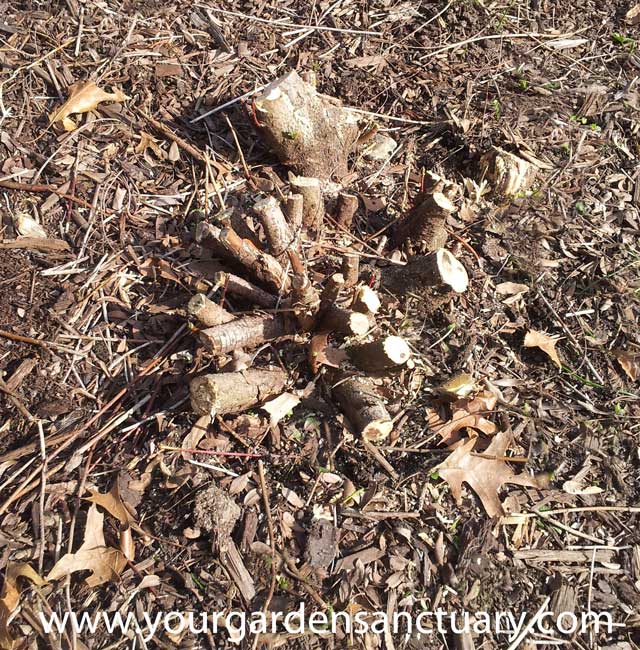When you look at your landscape is it nicely arranged with all the plants in proportion?
Or do you see a few plants that have grown out of hand and have started their quest for world domination in your yard?
If it is the 2nd, it is likely some of those that have grown a little too well are cane type shrubs.
Cane type shrubs
Instead of a single trunk from which branches grow, Cane type shrubs have stems that shoot straight out of the ground. They branch very little.
They often reach a decent size within a few years of planting.
Here are some common cane type shrubs:
- Chokeberries (Aronia)
- Flowering quinces (Chaenomeles)
- Redtwig dogwoods (Cornus alba)
- Forsythias (Forsythia)
- Rose of Sharons (Hibiscus syriacus)
- Shrubby St. John’s worts (Hypericum)
- Japanese kerrias (Kerria japonica)
- Privets (Ligustrum)
- Mock oranges (Philadelphus)
- Ninebarks (Physocarpus)
- Roses (Rosa)
- Spireas (Spiraea)
- Lilacs (Syringa)
- Some Viburnums (Viburnum)
- Weigelas (Weigela)
Several have an arching vase like form when young, but tend to flop over and look like a mess as they age. Forsythia is a classic example.

photo credit: roger4336 via photopin cc
Cane type shrubs can be tamed
Not only do they tend to flop over, they will often outgrow their spot in the garden.
The good news is that these cane growing shrubs are pretty easy to prune.
There are typically two ways that they are pruned, these are:
- Rejuvenation thinning
- Renovation
Rejuvenation thinning
Cane growing shrubs are thinned by cutting back the stems to the ground over a 3 year period. The best time for rejuvenation thinning is in late winter or early spring, just before growth begins.
- You should begin by removing 1/3 of the oldest stems the first year.
- The 2nd year you remove 1/2 of the remaining old stems and cut back any real long new shoots growing from the previous year’s pruning cuts.
- The third season your remove the remaining original stems and tip back any real long new shoots that grew.
Renovation pruning of cane type shrubs
Renovation pruning is a lot simpler. You do all three years pruning at once when the plants are dormant. This is usually in late winter or early spring.
Here is an example of a redtwig dogwood (Cornus sericea) that I cut to the ground last Spring (renovated).

Cut all the stems down to the ground with a pruning saw and you are left with this.

As you can see this is not an operation for the timid:

Here is how that red twig dogwood I cut down grew last year. Its not super pretty just yet, but after another year of growth it will look pretty good.

Not all cane type shrubs can tolerate being cut completely to the ground at once.
Here are some that can as long as they are healthy and you do it when they are dormant. You should also water them well the year afterwards.
- Barberry (Berberis)
- Redtwig Dogwood (Cornus)
- Hazel (Corylus)
- Smoke bush (Cotinus)
- Deutzia
- Mock orange (Philadelphus)
- Flowering currant (Ribes)
- Willow (Salix)
- Bridal wreath spirea (Spiraea)
You can try to renovate other cane type shrubs just be aware there is a greater risk they may not come back.
In most cases the thinning rejuvenation process done over a few years is safer for the plant. But if your a bit impatient, renovation pruning can bring your yard back under control real quickly.

